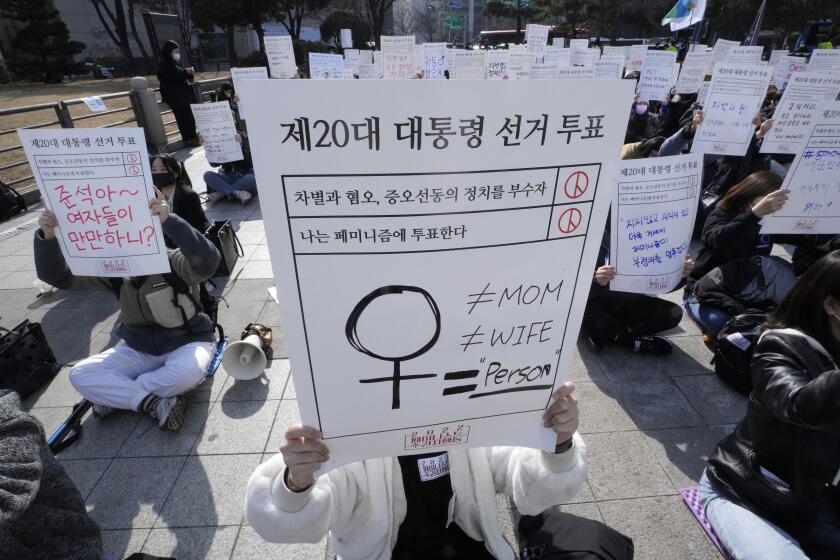Francis X. Murphy, 87; Priest and Writer Told of Vatican II Intrigue
- Share via
Father Francis X. Murphy, an author whose puckish and revealing insider dispatches from the Second Vatican Council in the 1960s set the tone for popular views of the extraordinary Roman Catholic conclave, has died. He was 87.
Murphy, the former rector of Holy Redeemer College in Washington, D.C., died Thursday at Anne Arundel Medical Center in Annapolis, Md. He had Parkinson’s disease and recently had cancer surgery.
Working under a pseudonym in a series of 13 elegantly written articles for the New Yorker from 1962 to 1965, Murphy caused a sensation in the marble halls of the Vatican, where the whole of the Catholic hierarchy was meeting to debate and institute fundamental changes in doctrine and teaching.
The magazine articles whetted an appetite for news about the church among the secular press, particularly in the English-speaking world, and, as he later wrote, prompted the oft-asked question, “Who the hell is Xavier Rynne?”
Despite the priest’s prolific and elaborate denials, which involved what he jokingly called an “assiduous use of casuistry,” many observers of the council figured out early on that the author was in fact Murphy, who at the time was a professor based in Rome and a linguist working as a translator for the American bishops.
But it was only in the late 1970s that the Redemptorist priest publicly acknowledged being Xavier Rynne, which was a combination of his middle name and his mother’s maiden name. He admitted his authorship because, he wrote: “If I died tomorrow, the Jesuits would claim [Rynne], and the Redemptorists would be delighted to be rid of him.”
During the council and afterward, Murphy, using his own name, also wrote widely on Catholicism and the papacy for other publications and was a favorite guest of TV networks.
He used his facility with language, theology and history to promote and defend the various liberal movements within the church that were cresting at Vatican Council II, including successful efforts to have the liturgy said in the native language of the congregants, ecumenical outreach to Protestants and the Orthodox Church, and a redefinition of the pope’s authority in relation to the bishops.
In a typical passage, Murphy characterized the ruling hierarchy as employing “a fear-inspired ruthlessness in dealing with every semblance of nonconformity in theological thought, and a determination to explain the traditional doctrines of the church only within a rigid and static framework.”
Murphy had been an editor for the New Catholic Encyclopedia and had already written for scholarly journals and Catholic publications when he began collecting notes on the intrigue in Rome preceding the council.
He submitted an article to a literary agent who later put him in touch with William Shawn, the New Yorker editor.
Foreseeing the explosive nature of the material, Shawn argued for Murphy to remain anonymous.
The debut article, written as a “Letter From Vatican City,” was published in 1962 at the start of the council’s first session.
It exposed some uncomfortable truths about a Roman curia that jealously guarded its secrecy.
“There was a general line out of the Vatican that everything was in agreement,” James O’Neill, who at the time was a reporter in the Rome bureau of the National Catholic News Service, said in an interview this week. Rynne’s article “just ripped off the mask of tranquillity and calm and serenity that had been floating around.”
The New Yorker pieces were collected and published as “Vatican Council II” in 1968. The four volumes had a second printing in 1999.
A native of the Bronx, N.Y., Murphy was the son of Irish immigrants. His father was a policeman and his mother was a hotel concierge.
Murphy entered the Redemptorist seminary when he was 14 years old and was ordained a priest in 1940. His superiors encouraged him from an early age to pursue writing. He received a master’s degree and doctorate in history from Catholic University.
After serving at a church in New York and as a naval chaplain in Annapolis, he was an Army chaplain from 1951 to 1958. In that period, he was on the front lines in the Korean War. He attained the rank of captain and received a Bronze Star for offering Mass as mortar shells fell about him. He later worked with relief efforts in Europe.
Murphy had lived in Annapolis since 1985 and served as a priest at St. Mary’s Catholic Church there and St. Christopher Catholic Church on Kent Island, Md. He was rector at Holy Redeemer and lived in Washington from 1977 to 1985.
Reached by a Redemptorist publication in 2001, he described his daily routine: “I say my prayers. I don’t make any fetish about it. I say good morning to God and go about my business.”
Survivors include two sisters.
More to Read
Sign up for Essential California
The most important California stories and recommendations in your inbox every morning.
You may occasionally receive promotional content from the Los Angeles Times.













